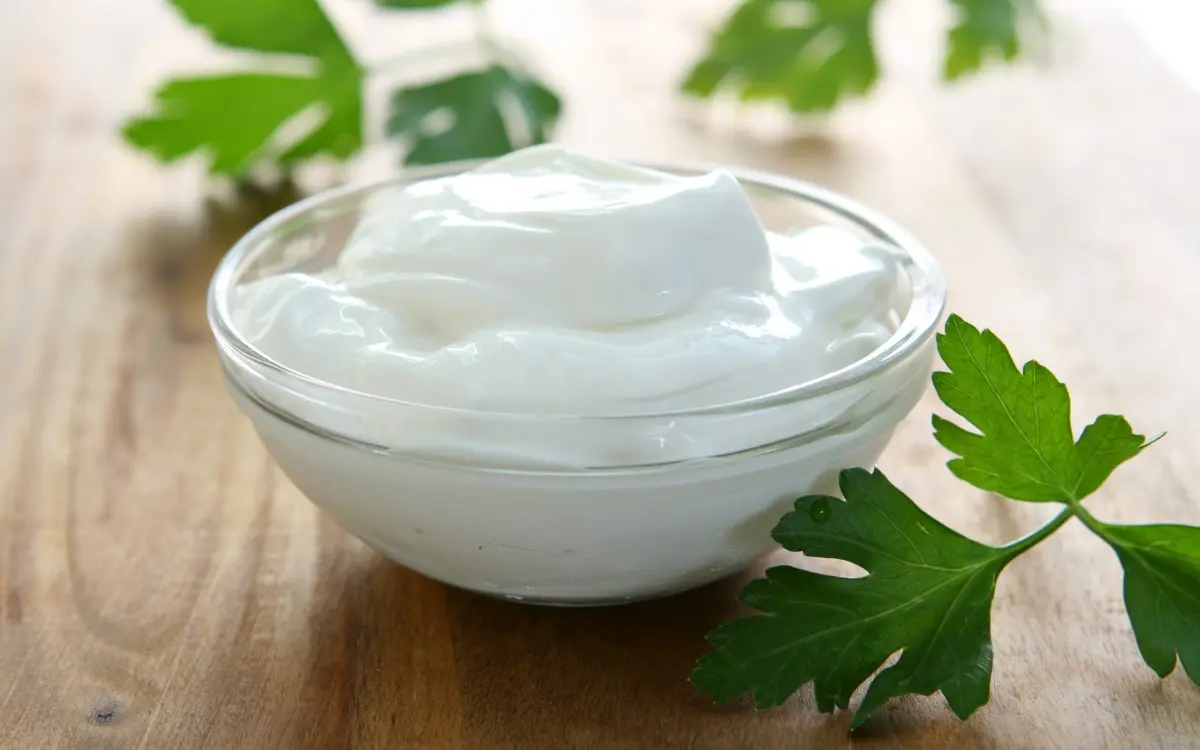new to the gluten free journey?
new to the gluten free journey?

Sour cream is a popular dairy product that is commonly used as a versatile ingredient in both sweet and savory dishes and also as a condiment.
However, for people with gluten sensitivity or celiac disease, the question remains: is sour cream gluten-free? Keep reading to explore all the information you need to know about sour cream and gluten.
Before we dive into whether sour cream is gluten-free or not, it’s important to first understand what gluten is. Gluten is a protein that is found in grains such as wheat, barley, and rye. It gives bread and other baked goods an elastic texture and helps them to rise.
For people with celiac disease or gluten sensitivity, consuming gluten is damaging to the intestines and can cause a range of symptoms, from gastrointestinal distress like bloating and diarrhea, to less specific symptoms like skin concerns and fatigue.
Sour cream is a dairy product that is made by fermenting cream with the lactic acid bacterial cultures. This process produces a tangy flavor and a thick, creamy texture. Sour cream is often used as a topping for dishes like baked potatoes, tacos, and chili, and is also used as an ingredient in many recipes such as dips, sauces, and baked goods.
Pure sour cream is made simply from cream and does not contain any grains or ingredients that contain gluten. However, it’s important to note that there are certain factors to consider before consuming sour cream if you are looking to avoid gluten.
The following are some potential sources of gluten in sour cream:
Cross-contamination can occur when gluten-containing products come into contact with gluten-free products, leading to small amounts of gluten being present in the gluten-free product. This can happen in manufacturing facilities, during transportation, in a restaurant kitchen, or even in your own kitchen.
To avoid cross-contamination, it’s important to ensure that food preparers use separate utensils and equipment when preparing gluten-free foods. In addition, it is important to always read food labels carefully to be sure that products are prepared in a dedicated gluten free facility.
If you’re following a strict gluten-free diet, it’s important to choose sour cream brands that are certified gluten-free or that have been tested for gluten. Some of our favorite brands of gluten free sour cream include the following:
As we cover in detail in this article and this article, those with celiac disease may react to dairy for several reasons:
It is important to note that when we refer to dairy, we are referring to A1 dairy. The vast majority of dairy products on the market are made with milk from cows that produce A1 dairy. However, there is another type of dairy that may be a better option. It is called A2 dairy. The terms A1 and A2 refer to different forms of beta-casein, a part of the curds (i.e., milk solids) that make up about 30% of the protein content in milk.
While it may seem like A2 is a newer type of milk, the reality is that when we look back many years ago, all cow’s milk contained A2 beta-casein protein. This is the same primary protein as is in human milk, so we know that our bodies were designed to digest it. So what changed? Over time, there was a genetic mutation in cows in European dairy herds and an A1 beta-casein variation resulted in cows with two types of proteins – A1 and A2. Eventually, A1 beta-casein became the dominant form of dairy in the United States, but unfortunately, A1 dairy can be difficult for humans to digest.
Another way to be certain that your sour cream is gluten free is to make your own at home. Here’s a simple recipe from Kris Bordess of Attainable Sustainable:
Ingredients
Instructions
While sour cream in its pure and simple form is generally gluten-free, it is important to be aware of the potential ways that sour cream could become contaminated with gluten, such as added ingredients or cross contamination. Furthermore, if you are still struggling with gastrointestinal symptoms, you may consider avoiding sour cream and dairy altogether.
However, by choosing certified gluten free sour cream brands and taking steps to avoid cross contamination, you can safely enjoy the many delicious dishes that can be made with sour cream.
Stay up-to-date with the latest articles, tips, recipes and more.

*These statements have not been evaluated by the Food and Drug Administration. This product is not intended to diagnose, treat, cure or prevent any disease.
If you are pregnant, nursing, taking medication, or have a medical condition, consult your physician before using this product.
The entire contents of this website are based upon the opinions of Peter Osborne, unless otherwise noted. Individual articles are based upon the opinions of the respective author, who retains copyright as marked. The information on this website is not intended to replace a one-on-one relationship with a qualified health care professional and is not intended as medical advice. It is intended as a sharing of knowledge and information from the research and experience of Peter Osborne and his community. Peter Osborne encourages you to make your own health care decisions based upon your research and in partnership with a qualified health care professional.